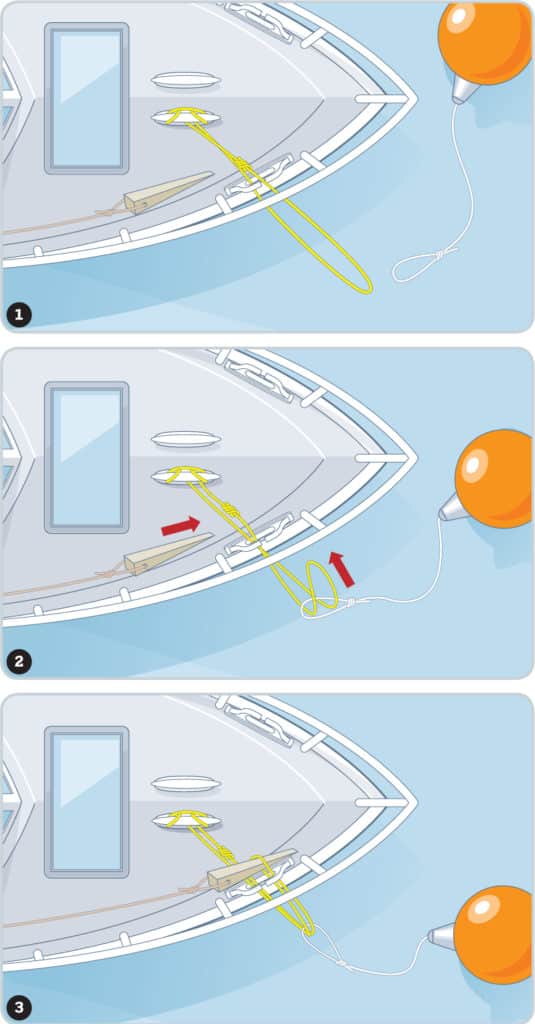The following scenarios describe techniques that may prove helpful when going forward to get off the hook isn’t desirable.
Catting the Painter
You need to get off your mooring. The wind is blowing, or the current’s running, and the mooring field is crowded. You’re alone. If you go forward and drop the painter, by the time you scramble back to the helm, you likely will have drifted into a neighboring boat. A neat solution is to rig a quick release that allows you to drop the painter from the helm.
First, make a simple wooden wedge out of scrap. Figure about eight inches long, an inch thick and tapering in width from three inches to about an inch. Drill a hole in the wide end and attach a length of stout cord long enough to reach from your bow to your helm.
Now double a length of line and cleat it off at the bow. Run the loop through a chock or the base of another cleat. (1) Remove the painter from your bow eye or cleat and take it over to the cleat with the loop rove through. Pass the loop through the thimbled eye of your painter, back through the cleat or chock and over the wedge. (2) Note: If the painter’s eye fits through a cleat base, you don’t need the doubled line. Just insert the loop through the cleat and then insert your wedge through the painter’s eye.
Wedge-secured, return to the helm with the “leash” for the wedge in hand. (3) Start the engine. Tug on the leash to drop the painter; then maneuver away with all due care.

A Safe Way to Anchor From the Cockpit
I see a lot of boatmen anchoring from astern. Not good. Even boat wakes can swamp a stern-anchored boat. Here’s one way to anchor safely from the cockpit. You’ll need an anchor roller and a hollow base cleat or set of chocks to the bow, so install these if your boating style dictates raising and dropping the hook without going forward.
With the anchor in the roller, bring the rode back to the cockpit, passing it through the chock or cleat base on the bow. With the rode in the cockpit and the anchor in the bow roller, cleat the anchor line to a spring cleat. This keeps the pull on the boat from the bow, so your vessel will still lie bow to the wind and waves. Utilize another cleat or chock as a “fair-lead” in running the rode aft, so that it doesn’t bear upon your windshield or cabin side.
The Seven P’s
All the tips above fall under what I call the Seven P’s: Proper prior planning prevents piss-poor performance. These concepts can be applied to many boating scenarios. Stay safe.








